Kelly Callahan, assistant director of program support for the Carter Center’s Health Programs, blogs from a river blindness-endemic village in western Cameroon, where she is assessing Carter Center and national program efforts to combat the devastating parasitic infection.
We started our journey to Massangam Health District in West Region of Cameroon early in the morning of April 27. I was travelling with Dr. Albert Eyamba, Carter Center resident technical adviser for Cameroon, and Dr. Moses Katabarwa, an epidemiologist for the Center’s river blindness, lymphatic filariasis, and schistosomiasis programs.
The village we wanted to visit is only accessible by one dirt road and is surrounded by two rivers. During the rainy season, which starts soon, the roads are washed out and the community is completely cut off from visitors. We wanted to visit this village now to gather critical surveillance information about Carter Center-assisted efforts to fight river blindness in this area.
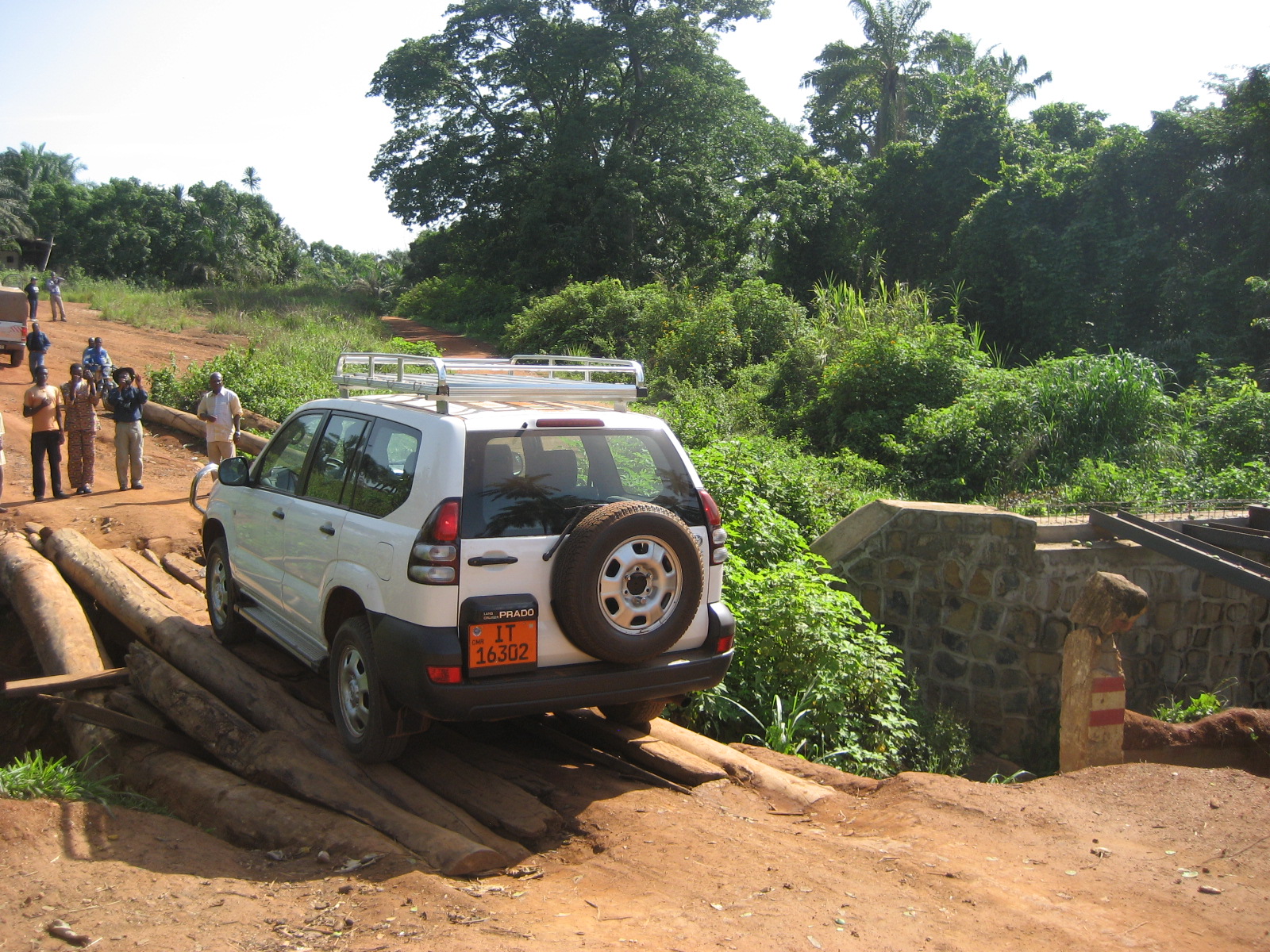
On our way to a village in Western Region, Cameroon, to conduct surveillance that will help inform our efforts to combat river blindness. (All Photos: Kelly Callahan)
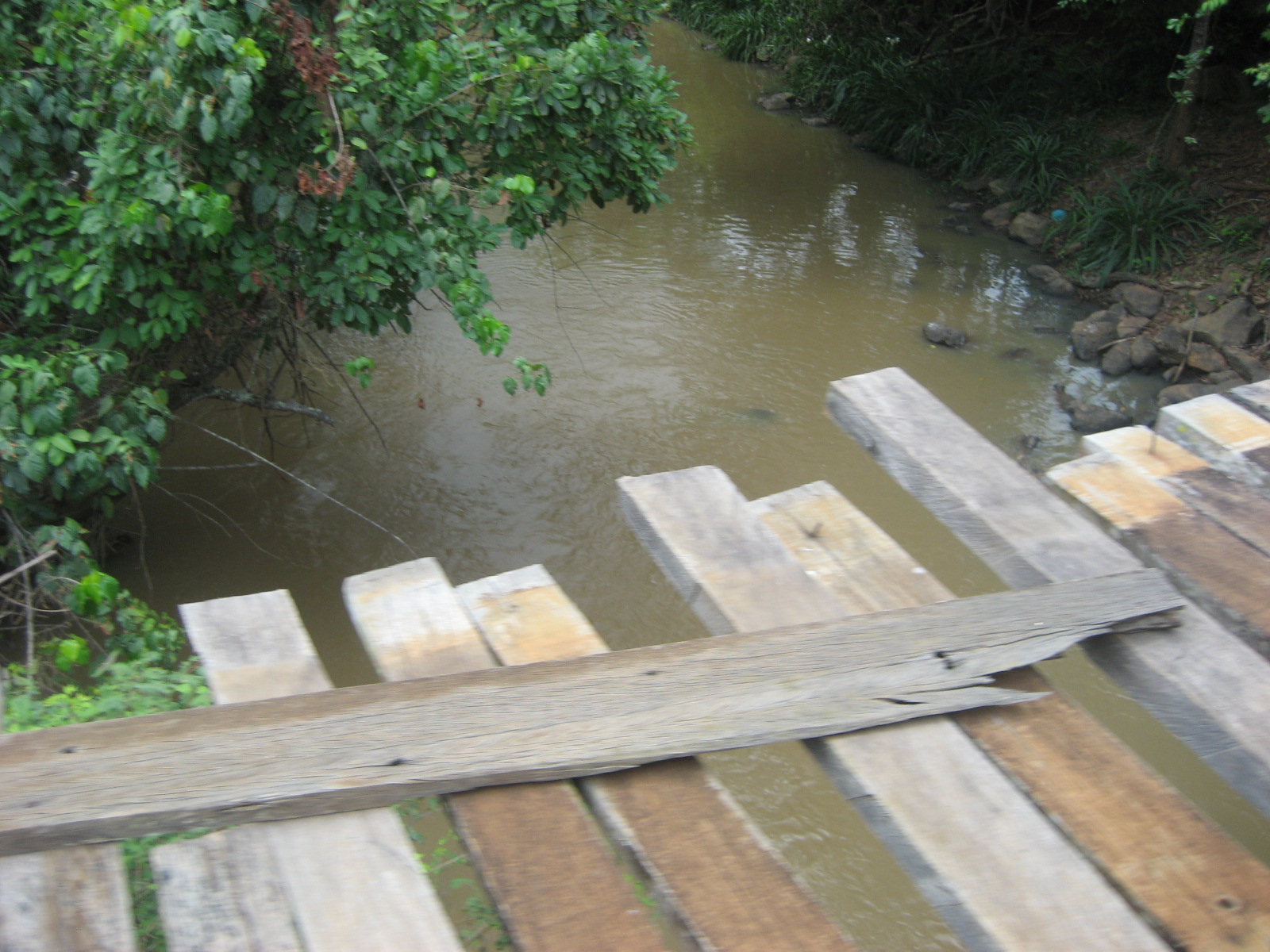
It wasn’t a good idea to look down when crossing this bridge in our truck, but we made it across safely.
After four hours on dirt roads, we finally made it. The entire community had gathered to welcome us—including the chief and the 10 community-directed distributors (CDDs) who, with the support of The Carter Center and in partnership with the national program, carry out the river blindness prevention work. The village has about 500 people, mostly subsistence farmers, who live in homes made of concrete block with a combination of sheet metal roofing and thatch.

The village chief (second from right) and all 10 community-directed distributors.
After greeting everyone, we went to the rivers to catch flies. River blindness is spread by the bites of black flies that breed near swiftly flowing rivers, so checking on the number of flies and testing several of them will be a good indicator of how much of this disease is present in the community.
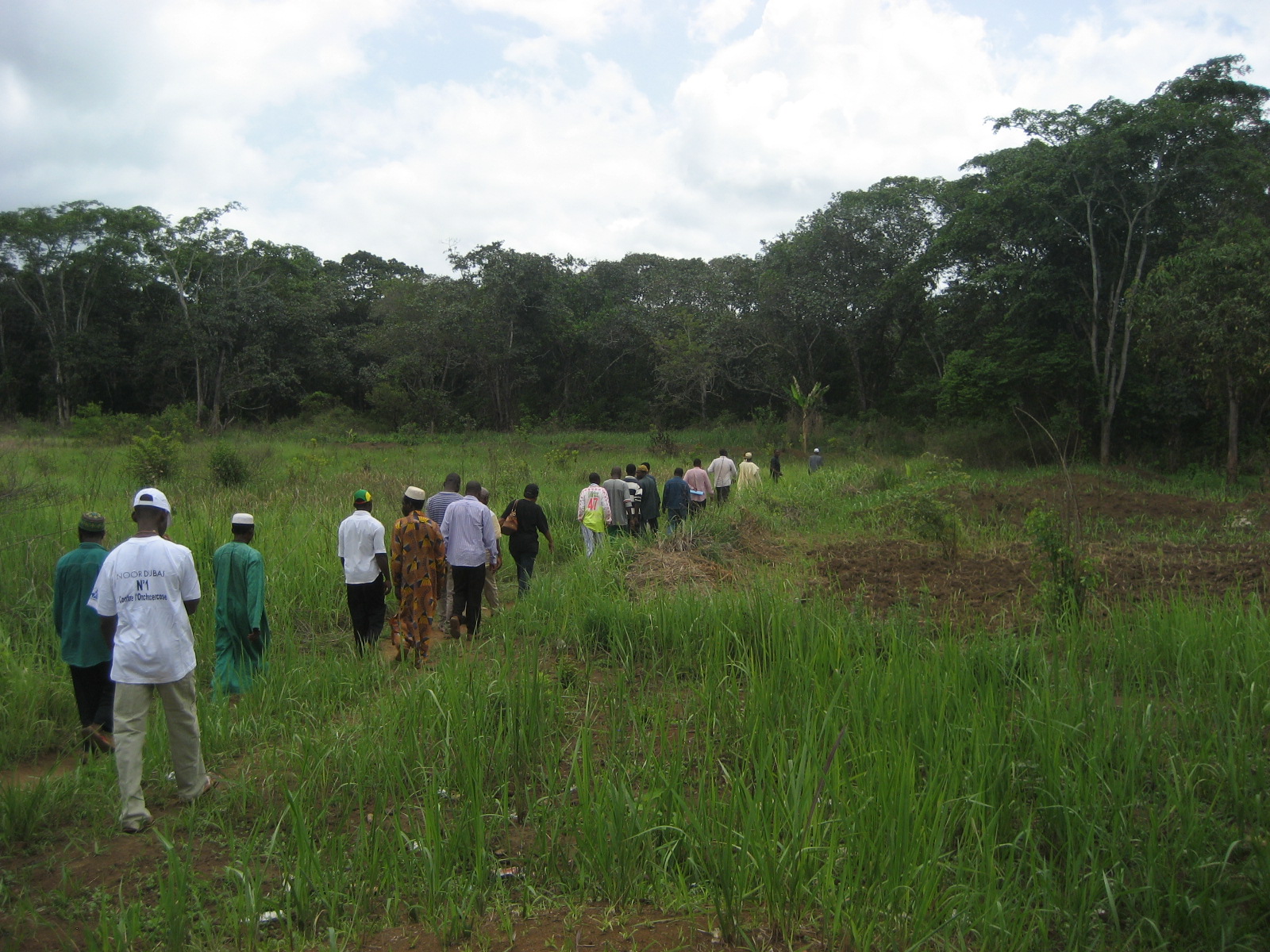
Our long procession journeys to the river to catch flies.
The number of flies was unbelievable, even in the mid-day sun, which is typically a less active time for the flies.
The exposed parts of my skin—my legs and arms—were bitten several times, and the bites are irritating for several days afterward. However, my experience was nothing compared to Dr. Katabarwa and a CDD, who rolled up their pants legs to attract flies searching for a blood meal. This would make our work catching the flies easier, but certainly their work a lot itchier. I cannot imagine being bitten more than a few times, and yet this is what people living in river blindness-endemic areas have to deal with on a daily basis.
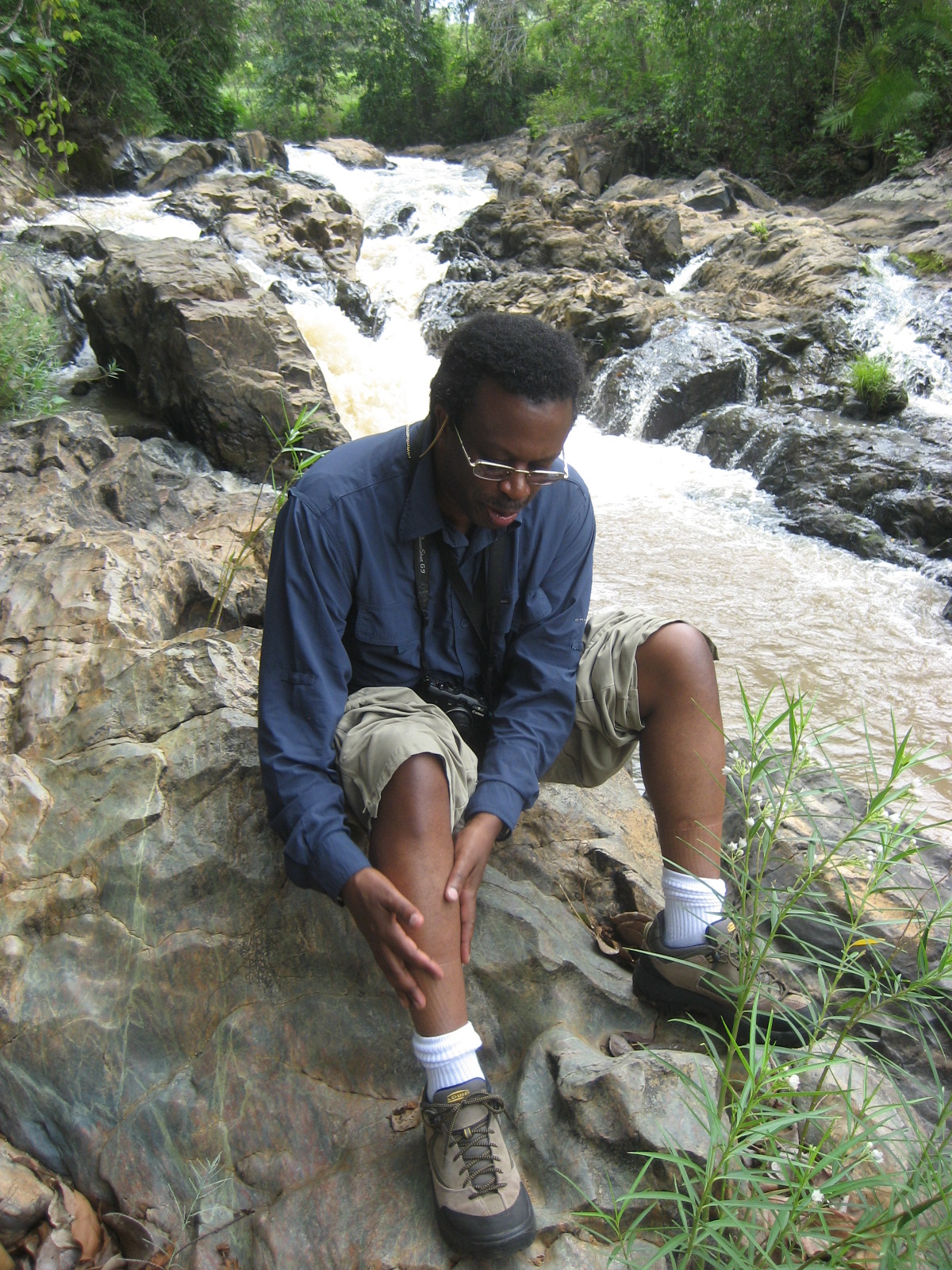
An untold sacrifice by health workers for the sake of science. In this case, Dr. Katabarwa, who would be itchy for days afterward from all the fly bites. Fortunately, he did not have to be concerned with catching river blindness, which requires being bitten multiple times over several years to develop the disease. Even so, river blindness is easily prevented and treated with a single annual dose of Mectizan®.

The Massangam Health District assistant medical officer holds a tube full of flies just caught taking blood meals from Dr. Katabarwa’s legs. The flies will be studied to determine if they carry onchocerciasis.
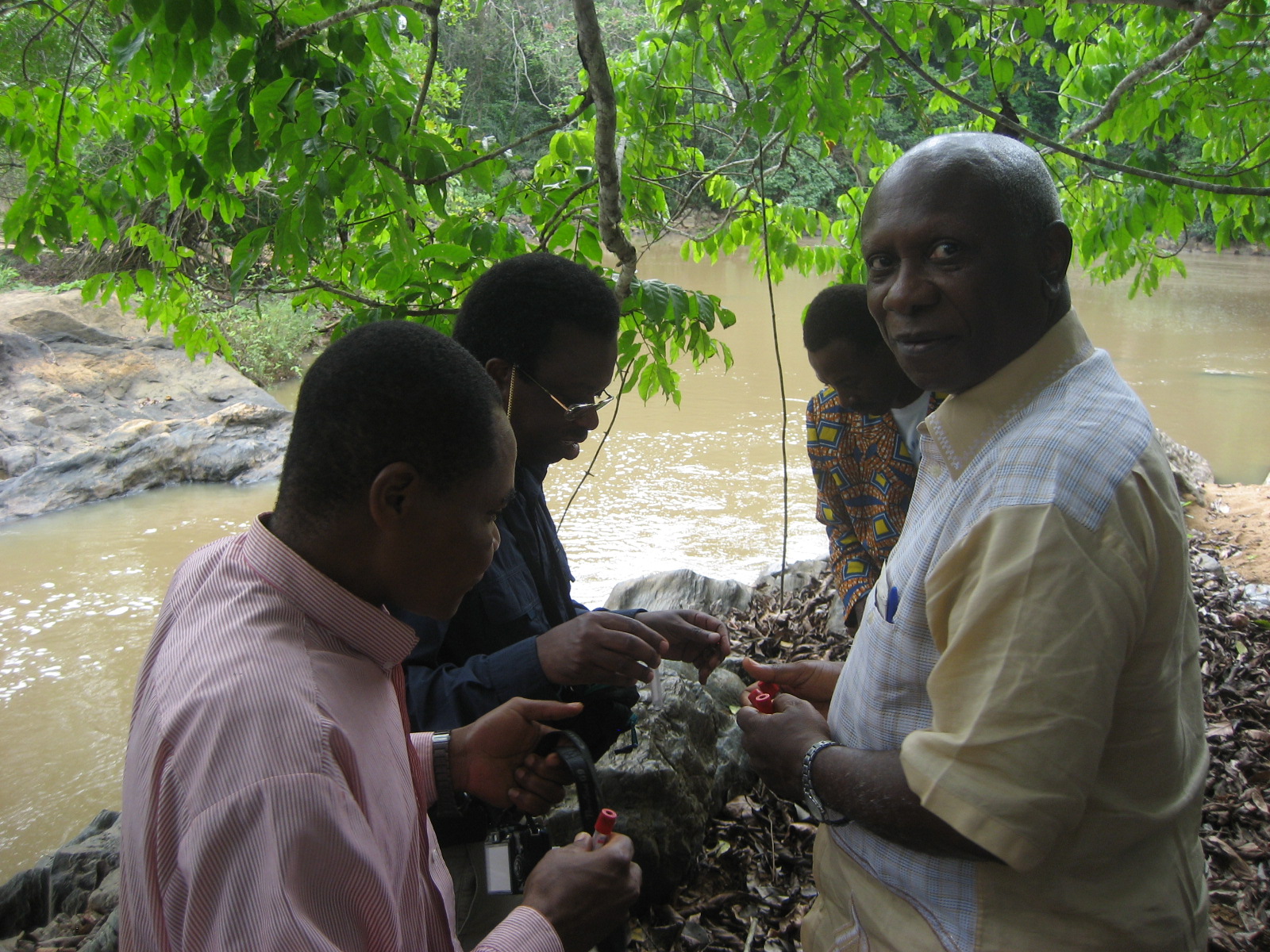
Dr. Albert Eyamba (right), Carter Center resident technical adviser for Cameroon, assists in gathering flies.
We met a young woman making palm oil near one of the rivers, who was being bitten on both arms and legs. The biting rate seemed very high in this village, which like the high number of flies is an indicator that a high level of river blindness exists here.
For this woman, river blindness is an occupational hazard of an already physically taxing job, since making palm oil can only be done at the river’s edge. One of the CDDs told us the woman had taken Mectizan® (donated by Merck & Co.,Inc.), so although she likely experiences significant discomfort, she will not risk damaging her vision.
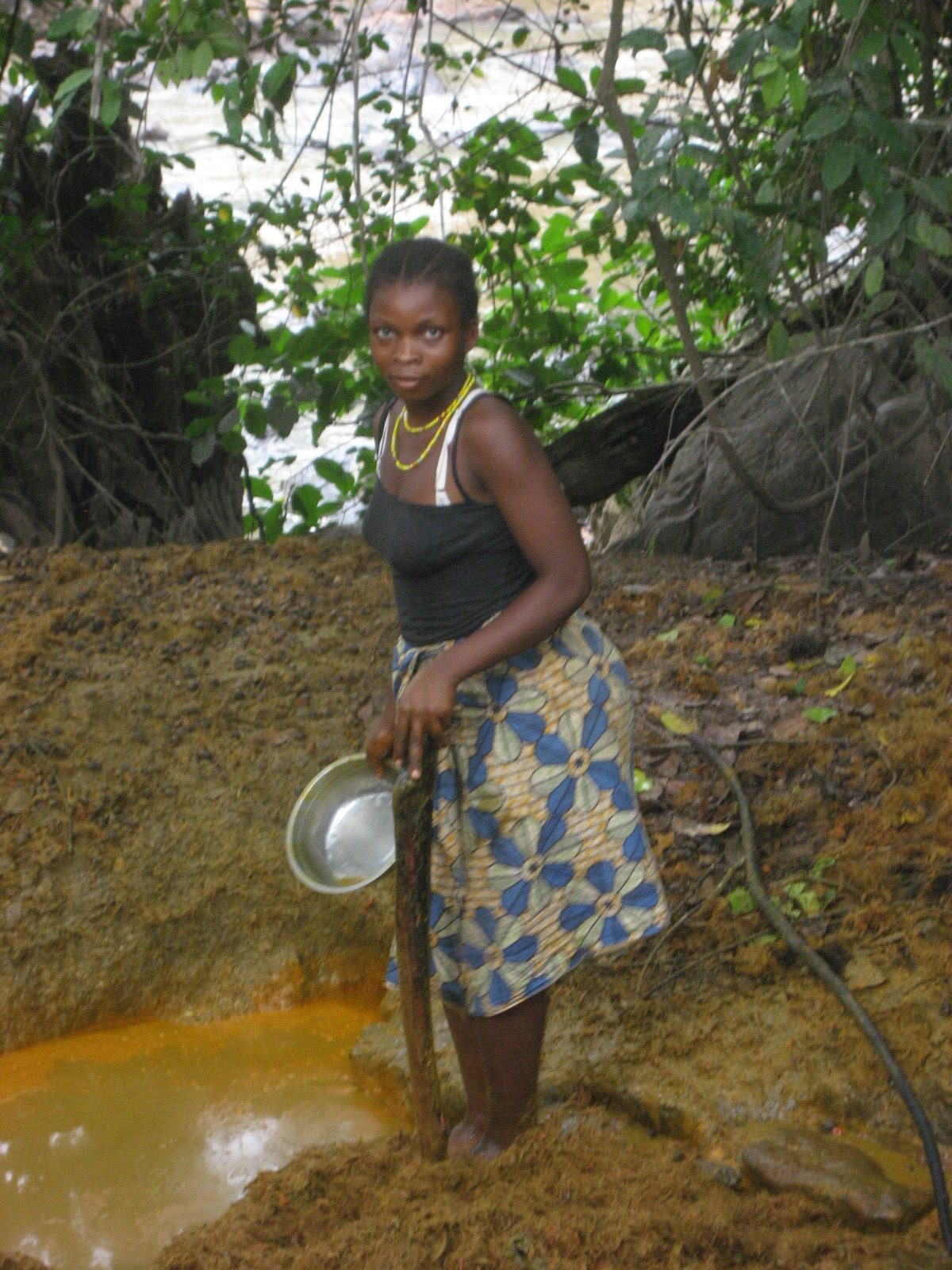
For this woman, river blindness is an occupational hazard of her trade—making palm oil.
Once we had filled all of our tubes with flies, we went back to the main part of the village and met with the village elders and CDDs. The Ministry of Health’s delegate for the district spoke and noted he was very pleased to meet with the community and grateful for the assistance of The Carter Center in controlling river blindness.
He pledged to continue his work of controlling river blindness in the village. The entire village was very happy to have all of these guests present, as well as the district medical officers that accompanied us. The village shared their great appreciation for the work of the Center and the Ministry of Health.
It was quite an experience getting to–and being in–the village. The return trip turned out to be even more intense. It had rained while we were meeting with the community, and the rains caused the roads to turn into great, big, long mud slides. One of our vehicles got stuck and we had to assist in maneuvering it out, but it was absolutely worth the trip.
Read More:

Kelly Callahan bio >
Please sign up below for important news about the work of The Carter Center and special event invitations.